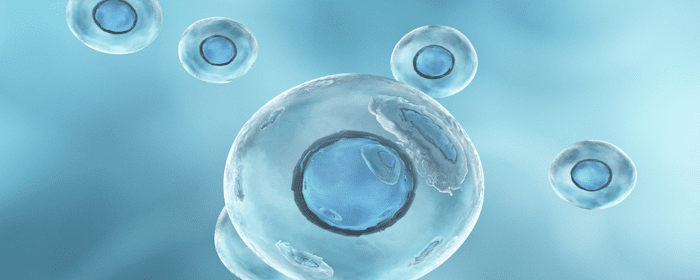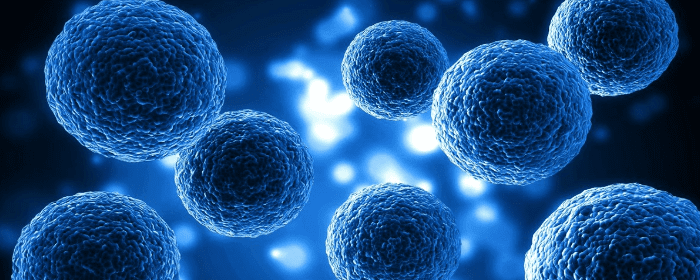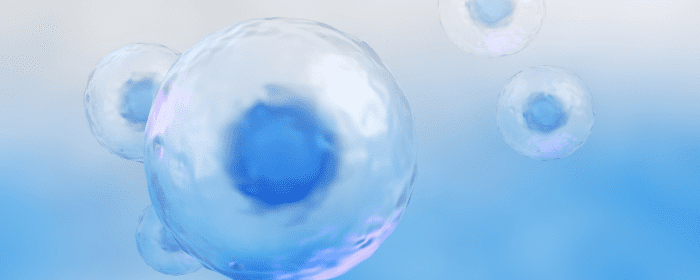
by admin | Jan 3, 2025 | Adipose, Mesenchymal Stem Cells, Spinal Cord Injury, Stem Cell Research, Stem Cell Therapy
With over 290,000 people in the United States living with SCI and with roughly 17,000 new cases each year, spinal cord injury (SCI) is a serious condition that significantly impacts the lives of those affected.
Considering the complexity associated with SCI, current treatments for SCI continue to focus mainly on managing symptoms and providing physical rehabilitation. However, recently there has been growing interest in exploring the potential of regenerative medicine, particularly stem cell therapy, for treatment of SCI.
Bydon et al.’s Phase I clinical trial explored the safety of injecting autologous adipose-derived mesenchymal stem cells (AD-MSCs) into the spinal fluid of patients with traumatic spinal cord injury (SCI).
The study successfully manufactured and administered the stem cells to all patients without any serious adverse events (AEs). Although some non-serious AEs, including headache and musculoskeletal pain, were observed, none of the patients were excluded from the study as a result.
At the conclusion of this study, the authors found that several participants showed improvements in sensory and motor functions, as assessed by the American Spinal Injury Association (AIS) impairment scale.
Previous research has indicated that mesenchymal stem cells (MSCs) might aid in neurogenesis, angiogenesis, immune regulation, and neuronal plasticity. AD-MSCs, in particular, are advantageous due to their ability to regenerate nerves and blood vessels, their ease of extraction, and availability.
This study’s findings align with earlier studies, which also reported no serious AEs from intrathecal AD-MSC injections in SCI patients. Similar safety profiles were observed in studies involving other neurodegenerative diseases like amyotrophic lateral sclerosis (ALS) and multiple sclerosis.
Bydon et al.’s reported changes in MRI scans following the stem cell injections as part of this study. Previous studies have reported mixed conclusions on whether these changes are linked to neurological decline. Some suggest that these MRI findings could be due to inflammation from the stem cell treatment, potentially leading to nerve root compression. However, in this study, the authors found that these MRI changes did not correlate with neurological deterioration, indicating that they might be benign reactions.
While some patients showed improvements in their AIS grades, the authors caution that these findings should be carefully interpreted due to the limitations associated with this Phase I trial, including the lack of a control group.
Bydon et al. call for future larger-scale, randomized controlled trials to conclusively determine the benefits of AD-MSC injections. Additionally, they recommend expanding the study to include a broader range of cytokines and immunomodulatory markers to provide a deeper understanding of the stem cells’ mechanisms.
The authors conclude that this trial demonstrated the safety of intrathecal AD-MSC injections in SCI patients, with no serious AEs reported. Seven out of ten patients showed improvements in their AIS grades. These results encourage further research to evaluate the impact of AD-MSCs on neurological outcomes and to explore their potential in aiding late-stage recovery in SCI patients.
Source: Bydon M, Qu W, Moinuddin FM, Hunt CL, Garlanger KL, Reeves RK, Windebank AJ, Zhao KD, Jarrah R, Trammell BC, El Sammak S, Michalopoulos GD, Katsos K, Graepel SP, Seidel-Miller KL, Beck LA, Laughlin RS, Dietz AB. Intrathecal delivery of adipose-derived mesenchymal stem cells in traumatic spinal cord injury: Phase I trial. Nat Commun. 2024 Apr 1;15(1):2201. doi: 10.1038/s41467-024-46259-y. Erratum in: Nat Commun. 2024 Jun 5;15(1):4799. doi: 10.1038/s41467-024-48979-7. PMID: 38561341; PMCID: PMC10984970.

by admin | Mar 14, 2024 | Spinal Cord Injury, Mesenchymal Stem Cells, Stem Cell Research, Stem Cell Therapy
Nerve damage resulting from spinal cord injury (SCI) often leads to temporary or permanent loss of function and contributes to poor quality of life. Most common among males below 30 years of age, SCI recovery has been limited specifically as a result of the low growth capacity of neurons and a lack of nerve growth factors.
While current SCI treatment focuses on stabilizing the injured area and preventing secondary injury through a combination of surgery, pharmacological intervention, and rehabilitation, the success of treatment has been limited and unable to stimulate spinal cord regeneration.
Considering the limited success of confidential SCI treatments, several types of stem cells are currently being tested for the treatment of SCI, including mesenchymal stem cells (MSCs) isolated from bone marrow (BMSCs), umbilical cord (UC-MSCs), and adipose tissue (ADSCs).
In this review, Liau et al. discuss the current status of MSC therapy for SCI, criteria to consider when applying MSC therapy, and review novel biological therapies that can be used together with MSC therapy to enhance its therapeutic potential.
Based on the results of clinical trials, the authors conclude that MSC therapy is beneficial for SCI patients. While not all patients responded to MSC therapy, the authors note that observed improvement varied from patient to patient. In addition to discrepancies attributed to patient variations, source of MSC, route of stem cell administration, timing of cell administration, number of cell administrations, number of cells administered, and cell preparation methods were also observed to affect the efficacy of therapy.
Despite the delayed progress in phase III trials, there are several new therapeutic treatment strategies that incorporate stem cell secretory product-based therapy, including stem cell secretome therapy, scaffold-based therapy, and immunotherapy. The authors indicate that all of these novel therapeutic approaches may be able to be used in combination with MSC therapy to enhance the therapeutic efficacy of MSCs by improving cell survival, migration, engraftment, and proliferation.
The authors conclude this review by summarizing that, to date, MSC therapy has been demonstrated to be safe but unable to improve neurological function for all treated patients. Despite the limited success of this therapy, other studies are currently underway in an effort to improve the delivery of MSCs and MSC-derived products by utilizing scaffolds or by combining them with immunotherapy to improve the efficacy of the treatment.
Source: “Treatment of spinal cord injury with mesenchymal stem cells – NCBI.” 22 Sep. 2020, https://www.ncbi.nlm.nih.gov/pmc/articles/PMC7510077/.

by admin | Mar 7, 2024 | Spinal Cord Injury, Mesenchymal Stem Cells, Stem Cell Research, Stem Cell Therapy
Spinal cord injuries (SCI) are the most serious complication associated with spinal injuries and often result in permanent damage to the nervous system. With nearly 300,000 people in the United States living with SCI, the inability to treat these injuries has a significant impact on physical, mental, and financial health.
Additionally, while 94% of those suffering acute traumatic SCI survive initial treatment for the condition, both long-term survival and quality of life are often reduced as a result of post-injury complications. Further complicating the issue is the fact that the current standard of SCI treatment is designed only to reduce the secondary effects of injury and not directly promote healing through neuroregeneration.
Considering that mesenchymal stem cells (MSCs) are known to have anti-inflammatory properties, promote vascular regeneration, and to release neuro-nutrients, they are becoming increasingly promising as a potential treatment for SCI.
In this article, Xia et al. examine the evidence of pathophysiological changes occurring after SCI, review the underlying mechanisms of MSCs, summarize the potential application of MSCs in clinical practice, and highlight the challenges surrounding the use of MSCs in the treatment of SCI in future applications.
The goal of any SCI therapeutic treatment option is to promote rapid recovery of neurological function through a combination of medical and surgical interventions. However, to date, there are no optimal treatment strategies that allow for this goal to be met.
MSCs’ multidirectional differentiation capabilities are highly viable and known to provide structural support in SCI. In terms of using MSCs in the treatment of SCI, and specifically for their role as an anti-inflammatory agent, the most attractive aspect is their unique immunomodulatory ability.
Additionally, the goal of treatment after SCI is to repair the damaged nerve cells and restore nerve function. Studies exploring differentiation of MSCs after SCI have demonstrated spontaneously expressed neuromarkers at SCI sites and have allowed for recovery of neurological function.
The authors point out that traumatic SCI usually results in the direct destruction of blood vessels around the spinal cord which often results in ischemic necrosis and secondary injuries. Since promoting vascular recovery contributes to the recovery of motor function in patients with SCI, SCI vascular recovery is a new target for the treatment of SCI. Several studies have observed that MSCs secrete angiogenic factors that promote pericyte recruitment, a critical step in vascular maturation. The authors also report recent findings indicating that 57% of the vascular endothelial cells around the SCI of a mouse showed vascular regeneration effects after receiving MSC-EVs with an extensive vascular network formed around the injury over a period of 28 days.
Although MSCs are beneficial to the recovery of neurological function in patients with SCI, the authors call for additional research to focus on better understanding the SCI cellular mechanisms and MSC action for use in clinical practice. Additionally, Xia et al. point out that the survival rate and long-term survival of MSCs in the SCI microenvironment remain an unresolved issue.
MSCs repair SCI through anti-inflammatory effects and by promoting nerve axon regeneration and vascular regeneration. While further research is required to fully understand the mechanism underlying the effect of MSCs, the authors conclude the role of MSCs in treating SCI has been demonstrated in several clinical trials.
Source: “Mesenchymal stem cells in the treatment of spinal cord injury.”
https://www.frontiersin.org/articles/10.3389/fimmu.2023.1141601/full.

by admin | Feb 22, 2024 | Spinal Cord Injury, Adipose, Mesenchymal Stem Cells, Stem Cell Research, Stem Cell Therapy
With more than 17,000 people in the US sustaining a spinal cord injury (SCI) each year and an estimated combined cost to healthcare and the workforce exceeding $40 billion, the condition has significant personal and socioeconomic implications. In addition, SCIs have limited pharmacological treatment options to support the regeneration of nerve damage.
Considering the limited treatment options for this condition, the field of regenerative medicine, and specifically the use of stem cells, has recently drawn interest as a potential therapeutic treatment option for paralysis resulting from SCIs.
In this report, Bydon et al. summarize findings of the ongoing multidisciplinary phase 1 clinical trial exploring the safety and efficacy of intrathecal autologous adipose tissue-derived (AD) mesenchymal stem cells (MSCs) in patients with blunt, traumatic SCI.
Specifically, as part of this report, the authors describe the outcome of the first patient with C3-4 SCI treated with AD-MSCs. At the time of SCI, neurologic examination revealed complete loss of motor and sensory function below the level of injury; an injury diagnosed as an American Spinal Injury Association (ASIA) grade A SCI.
After undergoing initial treatment, including C2-6 posterior cervical decompression and fusion, improvement in motor and sensory function was demonstrable. However, neurological gains plateaued 6 months after sustaining injury.
Upon enrollment into the CELLTOP clinical trial 9 months after injury, the patient’s neurologic status was found to be ASIA grade C and imaging revealed bilateral myelomalacia at the C3 level and at the C2-6 decompression and fusion. Additionally, an open biopsy of adipose tissue found in the abdominal wall was performed 8 weeks prior to receiving an initial intrathecal injection.
After receiving an intrathecal injection of 100 million autologous AD-MSCs 11 months after injury, the patient was observed for clinical signs of efficacy at 3, 6, 12, and 18 months following injection.
Bydon et al. observed progressive improvement in upper extremity motor scores and considerable improvement in lower extremity scores at 18 months following injection. The patient also demonstrated consistent improvement in ASIA sensory score, including improvements in pinprick and light touch scores at follow-up after 18 months. The authors reported patient improvements in Capabilities of Upper Extremity score, quality of life (as measured by Global Health Score), and in physical and occupational therapy measures. Other than a moderate headache on day 2, no other safety issues or adverse events were reported.
While further clinical trial is required, the authors conclude that intrathecal AD-MSC administration may be a relatively noninvasive and safe therapeutic option for patients with SCI to improve their neurologic status after reaching a ceiling effect in terms of spontaneous recovery.
Source: “First Report From a Phase 1 Trial of Autologous Adipose Tissue ….” 27 Nov. 2019, https://www.mayoclinicproceedings.org/article/S0025-6196(19)30871-7/fulltext.

by admin | Feb 8, 2024 | Spinal Cord Injury, Mesenchymal Stem Cells, Stem Cell Research, Stem Cell Therapy
Spinal cord injury is one of the most complicated and serious pathological impairments affecting the central nervous system. Since the human body is unable to regenerate and repair the spinal cord after injury, there is a high likelihood of suffering permanent damage and disability.
Often compounding the issue of SCI, secondary events occurring after the initial injury to the spinal cord significantly reduce cell migration and axonal regrowth and limit repair and regeneration.
Recently, transplantation of mesenchymal stem cells (MSCs) has been shown to promote the repair of injured spinal cord tissues in animal models. However, as Qu and Zhang highlight in this review, there remain many unanswered questions that are essential for improving the effects of this MSC therapy. As such, the authors focus this review on recent information about the behavior and function of MSCs in SCI, the function of biomaterials to direct the behavior of MSCs, and the attempt to emphasize combinational strategies such as tissue engineering for functional improvements of SCI.
There are studies showing that the migratory and homing capacities of MSCs are closely related to their engraftment and regeneration ability. Considering this, the authors highlight the importance of having MSCs migrate and integrate into host spinal cord tissue. Since MSC homing toward injured tissue is not an efficient process, and to ensure a more effective stem cell therapy outcome, it is important that these transplanted cells be introduced in a way that increases the migratory potential of healthy MSCs to the site of injured tissue.
Additionally, while transplanted cells have been identified adjacent to neurons after SCI, the surviving number of grafted and differentiated neurons was too small to be considered to contribute to functional recovery after SCI. However, data suggests that the ability of MSCs to secrete soluble factors or vesicles rather than engrafting and transdifferentiating might serve an important role in SCI repair.
The authors also point to studies that indicate MSC implantation could promote a therapeutic effect and functional recovery in experimental SCI animal models. The authors believe that this is a result of MSCs ability to differentiate into specialized neuronal and glial cell lineages after transplantation. While MSC transplantation has not yet been proven to be an effective and reliable therapy for SCI, additional studies need to be done before the therapy is utilized in clinical applications.
MSCs respond to the local environment in multiple ways and represent the most promising exosomes for neuropathic applications. Qu and Zhang conclude this review by calling for more intensive studies examining the potential benefits of combining MSCs with nerve tissue-engineered scaffolds to direct cell behaviors after SCI, including growth, migration, and differentiation.
Source: “Roles of Mesenchymal Stem Cells in Spinal Cord Injury – Hindawi.” https://www.hindawi.com/journals/sci/2017/5251313/.

by admin | Jan 25, 2024 | Spinal Cord Injury, Mesenchymal Stem Cells, Stem Cell Research, Stem Cell Therapy
Spinal cord injury is a global term used to capture damage to the spinal cord resulting from trauma (typically in the form of car accidents, falls, or work-related injuries) or from disease or degenerative conditions.
Worldwide, it is estimated that up to 500,000 people suffer some type of spinal cord injury (SCI), with most resulting from car accidents, falls, or violence. The World Health Organization reports that people suffering from SCI are between two and five times more likely to die prematurely as a result of this injury.
To date, there have been limited advances in therapeutic treatment or correction related to SCI, with any therapeutic development focused on treatment of SCI-related symptoms as opposed to the condition itself.
In this study, Muthu et al. analyze evidence of the efficacy and safety of mesenchymal stem cell (MSC) therapy in human subjects with traumatic SCI and identify the therapy’s potential for the future management of SCI.
To analyze this evidence, the authors identified and reviewed studies evaluating the efficacy and safety of stem cell therapy for SCI. Specifically, Muthu et al. screened 321 research articles before narrowing this study down to 66 full-text reviews and finally identifying 19 studies that fit the criteria for this review.
These 19 studies involving 670 subjects demonstrated that those in the identified intervention groups showed statistically significant improvement in key measurement criteria, including the American Spine Injury Association (ASIA) impairment scale grade improvement, ASIA sensorimotor score, activities of daily living score, residual urine volume, bladder function, light touch, and pinprick response.
The authors also found that while no significant difference was noted in motor score or activities of daily living scores, and that the intervention group has significant increase in complications, no serious or permanent adverse events were reported.
Considering these findings, Muthu et al.’s analysis establishes the efficacy and safety of MSC transplantation in the specific areas highlighted above (improvements in AIS grade, ASIA sensory score, and bladder function) without major adverse events. The authors also call for further research to better understand standardized dosing, time, route of administration, and source of MSCs used for transplantation.
Source: Muthu S, Jeyaraman M, Gulati A, Arora A. Current evidence on mesenchymal stem cell therapy for traumatic spinal cord injury: systematic review and meta-analysis. Cytotherapy. 2021 Mar;23(3):186-197. doi: 10.1016/j.jcyt.2020.09.007. Epub 2020 Nov 9. PMID: 33183980.







 St. Petersburg, Florida
St. Petersburg, Florida
